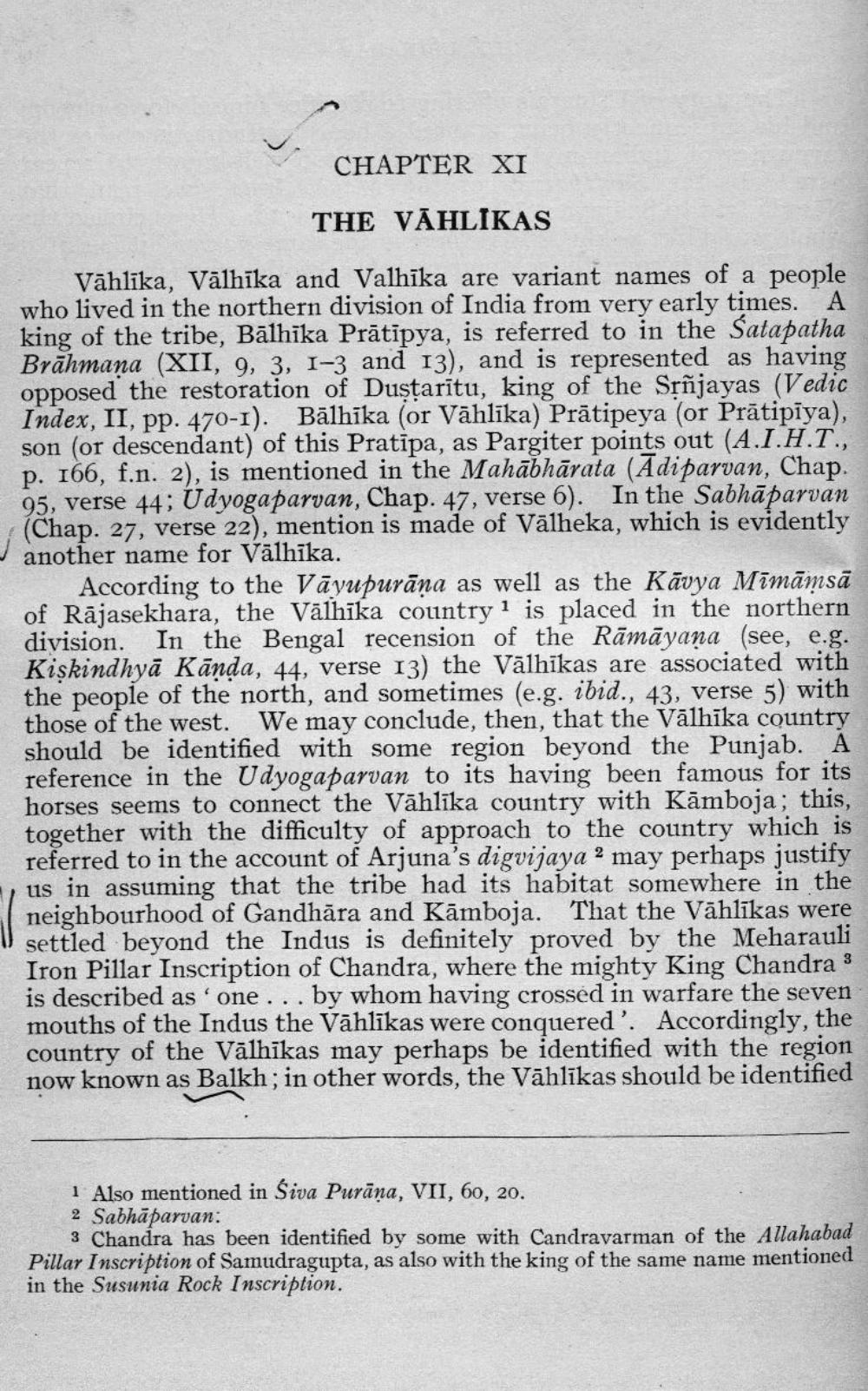________________
CHAPTER XI
THE VĀHLIKAS
Vāhlika, Vālhīka and Valhīka are variant names of a people who lived in the northern division of India from very early times. A king of the tribe, Bālhika Prātipya, is referred to in the Satapatha Brāhmana (XII, 9, 3, 1-3 and 13), and is represented as having opposed the restoration of Duştarītu, king of the Srñjayas (Vedic Index, II, pp. 470-1). Bālhīka (or Vāhlika) Prātipeya (or Prātipīya), son (or descendant) of this Pratīpa, as Pargiter points out (A.L.H.T., p. 166, f.n. 2), is mentioned in the Mahābhārata (Adiparvan, Chap. 95, verse 44; Udyogaparvan, Chap. 47, verse 6). In the Sabhāparvan (Chap. 27, verse 22), mention is made of Vālheka, which is evidently another name for Välhīka.
According to the Vāyupurāna as well as the Kavya Mīmāmsā of Rajasekhara, the Valhīka country 1 is placed in the northern division. In the Bengal recension of the Rāmāyana (see, e.g. Kiskindhyā Kānda, 44, verse 13) the Vālhīkas are associated with the people of the north, and sometimes (e.g. ibid., 43, verse 5) with those of the west. We may conclude, then, that the Vālhīka country should be identified with some region beyond the Punjab. A reference in the Udyogaparvan to its having been famous for its horses seems to connect the Vählika country with Kāmboja; this, together with the difficulty of approach to the country which is referred to in the account of Arjuna's digvijaya 2 may perhaps justify us in assuming that the tribe had its habitat somewhere in the | neighbourhood of Gandhāra and Kāmboja. That the Vāhlīkas were V settled beyond the Indus is definitely proved by the Meharauli
Iron Pillar Inscription of Chandra, where the mighty King Chandra 3 is described as 'one ... by whom having crossed in warfare the seven mouths of the Indus the Vāhlīkas were conquered'. Accordingly, the country of the Vālhīkas may perhaps be identified with the region now known as Balkh; in other words, the Vāhlīkas should be identified
1 Also mentioned in Śiva Purāna, VII, 60, 20. 2 Sabhāparvan:
3 Chandra has been identified by some with Candravarman of the Allahabad Pillar Inscription of Samudragupta, as also with the king of the same name mentioned in the Susunia Rock Inscription.




